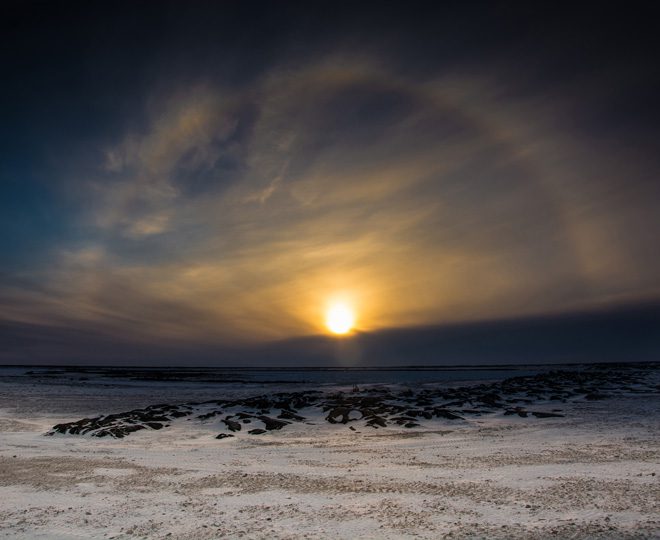
Ten years ago, a weather phenomenon occurred in Norman skies that left many baffled. The phenomenon, known as sundogs and halos, occurred in the late afternoon of Feb. 10, 2005, and produced bright spots and arcs that resembled halos.
“Sundogs and halos are fairly common but are most often observed in the winter when the clouds that produce them occur most frequently,” says David Andra, meteorologist in charge at the National Weather Service’s Norman office. “Both are caused by thin, high-level clouds composed of ice crystals. Hexagon-shaped crystals refract, or bend, the light to create the bright regions we know as sundogs and halos.”
The sundogs refer to the bright “mock suns” that appear around 22 degrees on either side of the sun. The arc that connects the sundogs is known as the halo.






















